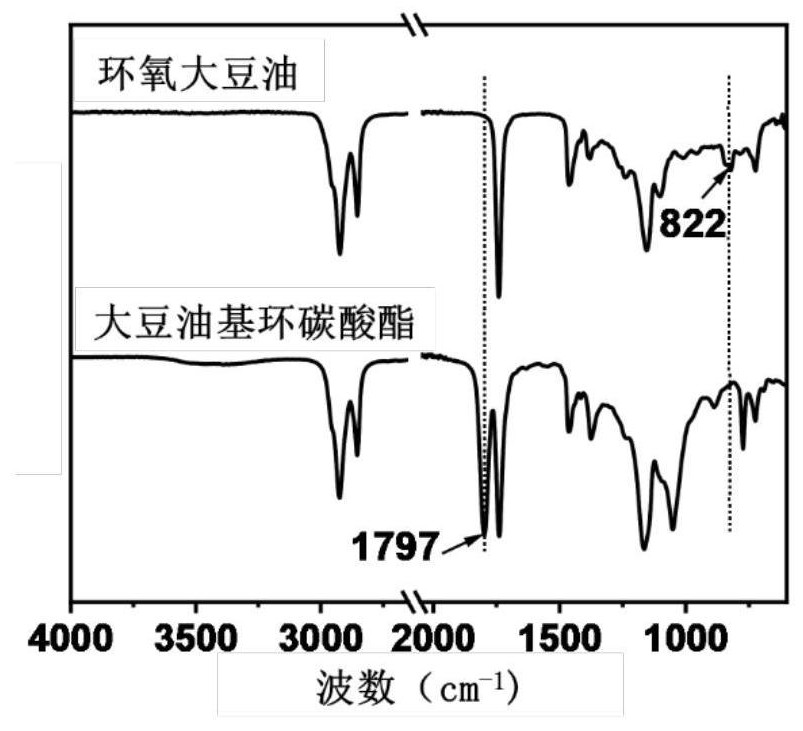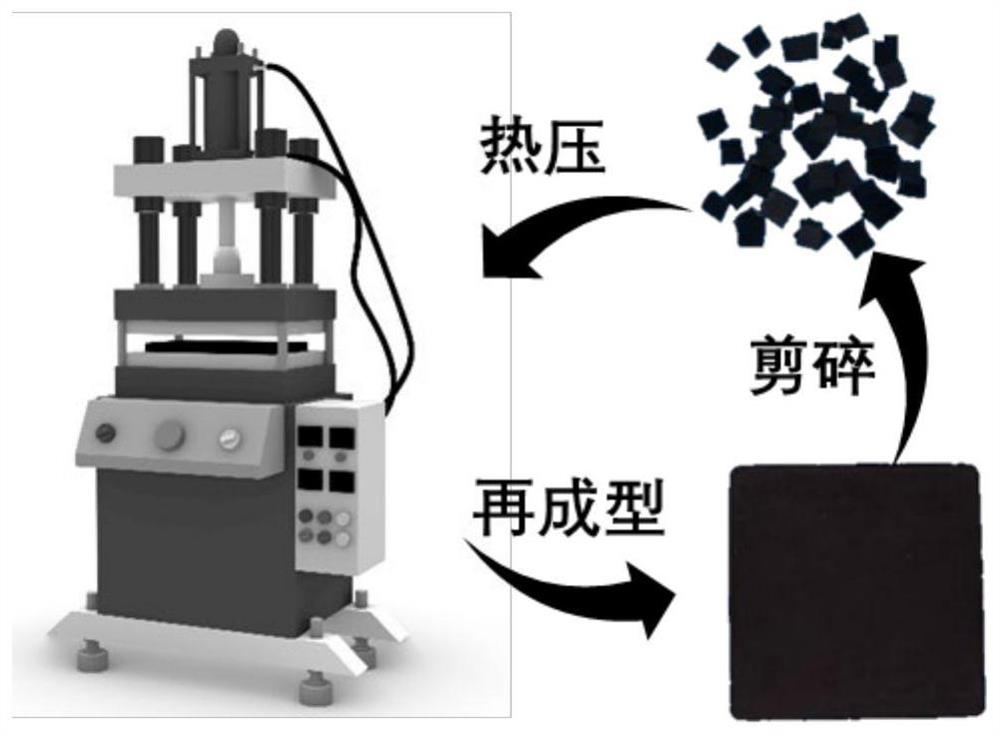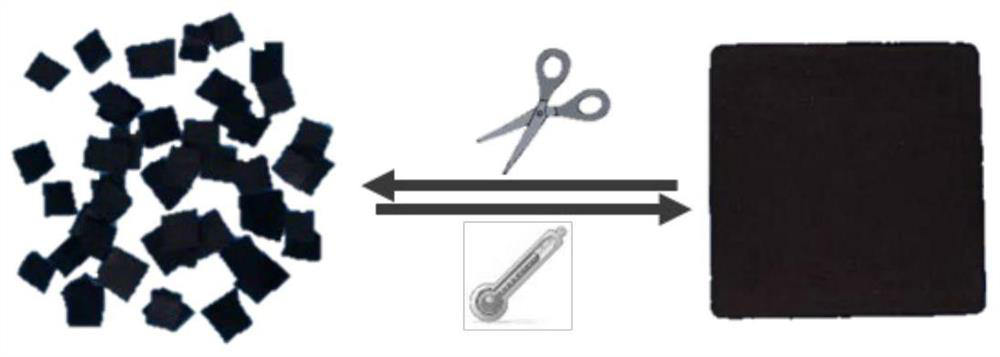Preparation method of full-bio-based non-isocyanate polyurethane capable of being recycled and reprocessed
A non-isocyanate, all-biological technology, applied in the field of bio-based polymer materials, can solve problems such as unfavorable sustainable development, and achieve the effect of good mechanical properties and thermal stability
- Summary
- Abstract
- Description
- Claims
- Application Information
AI Technical Summary
Problems solved by technology
Method used
Image
Examples
Embodiment 1
[0031] Epoxidized soybean oil (95g, 97.4mmol) was added to the pressure reactor, and tetrabutylammonium iodide (6.325g) was added as a catalyst, then carbon dioxide was introduced into the pressure reactor, and it was evacuated after staying for 2min. Repeat three times to exhaust the air in the reactor, and finally maintain the pressure at 2MPa, control the reaction temperature at 80°C, stir and react for 12 hours to obtain soybean oil-based cyclocarbonate; soybean oil-based cyclocarbonate (6g) was derivatized with pinene The compound 1,8-menthanediamine (1.661g) was stirred and mixed at room temperature, poured into a polytetrafluoroethylene mold, and cured in an oven at 150°C for 48 hours to obtain a fully bio-based non-isocyanate polyurethane.
[0032] Such as figure 1 As shown, the epoxy group in epoxidized soybean oil is at 822cm -1 The characteristic absorption peak at disappears, and 1797cm in soybean oil base cyclocarbonate -1 The appearance of a new absorption peak...
Embodiment 2
[0034] Epoxy tung oil (50g) is joined in the pressure reactor, add tetrabutylammonium iodide (3g) and L-ascorbic acid (0.8g) as catalyst, then pass into carbon dioxide in the reactor, evacuate after staying 1min, After this process was repeated three times, carbon dioxide was introduced again, and the pressure was maintained at 0.35 MPa, and the reaction temperature was controlled at 80° C., stirred, and after 8 hours of reaction, soybean oil-based cyclocarbonate was obtained; tung oil cyclocarbonate (6 g) was mixed with 1,8 - Menthane diamine (1.6 g) was stirred and mixed at room temperature, poured into a polytetrafluoroethylene mold, and cured in an oven at 140° C. for 36 hours to obtain a fully bio-based non-isocyanate polyurethane. The obtained non-isocyanate polyurethane has a tensile strength of 23.75MPa. At the same time, the broken sample can be remolded after hot pressing at 150°C for 4 hours at a pressure of 3MPa, and the tensile strength after remolding is 22.8MPa. ...
Embodiment 3
[0036] Epoxidized soybean oil (60g) is joined in the pressure reactor, add tetrabutyl ammonium bromide (3.8g) and L-ascorbic acid (1.1g) as catalyst, then pass into carbon dioxide in the pressure reactor, stay after 3min Empty, repeat this process three times to exhaust the air in the reactor, and finally maintain the pressure at 1.4MPa, control the reaction temperature at 80°C, stir, and obtain soybean oil-based cyclocarbonate after reacting for 8 hours; soybean oil-based cyclocarbonate (3g) and castor oil derivative decanediamine (1.65g) were stirred and mixed at room temperature, poured into a polytetrafluoroethylene mold, and cured in an oven at 150° C. for 48 hours to obtain a fully bio-based non-isocyanate polyurethane. The obtained non-isocyanate polyurethane has a tensile strength of 21.35MPa. At the same time, the broken sample can be reshaped after hot pressing at 150°C for 4 hours at a pressure of 3MPa. The tensile strength after remolding is 20.68MPa.
PUM
| Property | Measurement | Unit |
|---|---|---|
| tensile strength | aaaaa | aaaaa |
| tensile strength | aaaaa | aaaaa |
| tensile strength | aaaaa | aaaaa |
Abstract
Description
Claims
Application Information
 Login to View More
Login to View More - R&D
- Intellectual Property
- Life Sciences
- Materials
- Tech Scout
- Unparalleled Data Quality
- Higher Quality Content
- 60% Fewer Hallucinations
Browse by: Latest US Patents, China's latest patents, Technical Efficacy Thesaurus, Application Domain, Technology Topic, Popular Technical Reports.
© 2025 PatSnap. All rights reserved.Legal|Privacy policy|Modern Slavery Act Transparency Statement|Sitemap|About US| Contact US: help@patsnap.com



